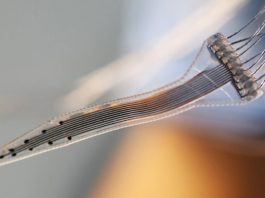STFC announces seven novel projects that will transform fundamental science into real-world solutions in areas such as medicine, nuclear security and air pollution, are in progress.
Science and Technology Facilities Council (STFC) funding worth nearly £600,000 will allow researchers to work alongside industry partners to translate STFC-funded research into commercial use, turning fundamental science into real-world solutions.
Jason Green, STFC Associate Director External Innovation, commented: “Projects such as these, which take cutting-edge research and reimagine it to address real-world challenges, are at the forefront of innovation.
“With this funding, researchers will be able to work with their industry partners to turn their exciting and novel ideas into reality.
“Through these partnerships, the quest for knowledge and understanding that makes the UK a great leader in science will also reap societal and economic rewards.”
Innovation Partnership Scheme
This funding comes under the Innovation Partnership Scheme (IPS), meaning that all the projects must involve the support of industrial collaborators.
The IPS funded projects include:
A joint fund for the University of York and STFC’s Central Laser Facility will examine two-dimensional infrared (2D-IR) spectroscopy. 2D-IR utilises the most advanced lasers to excite vibrations of molecules and make a sensitive ‘map’ of the 3D structures and intermolecular interactions of proteins and DNA.
The team has established a partnership with global biopharmaceutical company UCB Pharma, medical technology SME Dxcover Ltd and the Central Laser Facility to create the world’s first high throughput 2D-IR screening facility.
An innovative project led by the University of Leeds will create a novel catalyst material that has demonstrated itself to be efficient in converting nitrogen oxides into its less harmful relation, nitrogen gas, at low temperatures. Nitrogen Oxides (NOx) emissions from the combustion of fuels cause poor air quality with negative health implications, especially in densely populated areas.
Currently, the majority of NOx emissions come from road transport or sectors, including the combustion of fuels. While there are various technologies for nitrogen oxides emissions control from diesel engines, the conversion proficiency of current exhaust after-treatment technologies at low temperatures is poor, with less than 50% efficiency. The novel catalyst material found by researchers at Leeds University has indicated a significant capability to catalyse the reduction of nitrogen dioxide at low and even ambient temperatures.
The funding will enable scientists from University College London (UCL) to research plasma technology which has applications including semiconductor manufacturing, medicine, and surface treatments. Plasmas glow, resulting in energy loss, and this glow can also lead to destruction in the manufacturing process. At this time, the majority of plasma models ignore radiation, causing a lack of understanding about a vital process in the plasma.
The new project will model chemical and radioactive processes in plasmas by combining two databases – one designed by the scientists and one by industry partners – that will facilitate software that will enable full radiative-collisional plasma modelling and simulated light emission from the plasma.
The final project funded through the IPS is a study by the University of Huddersfield which will analyse how to transfer optical technologies to moulds for mass production. Working with GTMA and Reshoring UK, this project intends to transfer a wealth of university expertise in the manufacture of lenses and mirrors for astronomy into automating mould and die finishing. The University of Huddersfield’s Ultra-Precision Surfaces laboratory at Daresbury will lead this project. This association comprises leading industrial partners Zeeko Ltd, Wayland Additive and Arthur Jackson and Co.
Follow-on Fund
Further funding has been provided from the Follow-on Fund, which has been developed to fund a short-term proof-of-concept project, which may enable future commercial opportunities.
A team from the University of Surrey has been granted funding to develop a novel Computational Fluid Dynamics (CFD) technique, which is a method utilised widely in the field.
The majority of techniques model the flow of fluid through a fixed mesh. This project will create a novel, accurate, ‘geometry-free’ technique, modelling fluid flow instead of employing cells that move along with the flow.
This innovative method will open up applications where both accuracy and complex geometry are needed, for example, modelling flow through an engine with many moving parts.
A further project led by a group at the University of York will be funded to conduct work alongside the Sheffield-based lab, LabLogic. The project will aim to investigate functional materials for radiation detection. Functional materials encompass materials that are both structural and have a radiation-sensing capability. The preliminary inquiries will be with plastic scintillator material that can be readily moulded into different shapes. An initial prototype will be established in the area of nuclear security. This may be a potential product for LabLogic and in the latter part of the project.
The final project being funded will support the establishment of a quantum, gas jet-based beam scanner and will be led by researchers at the University of Liverpool. QuantumJET will develop micrometer-focused beams of atoms and molecules for non-invasive, high-resolution beam monitoring applications, as well as for employment as targets in storage rings.
The innovative device will monitor high-intensity beams such as those located in spallation sources or accelerators. As well as this, the technology offers promising potential for any accelerator or light source that would benefit from non-destructive online beam monitoring, including medical accelerators and ion implanters.









